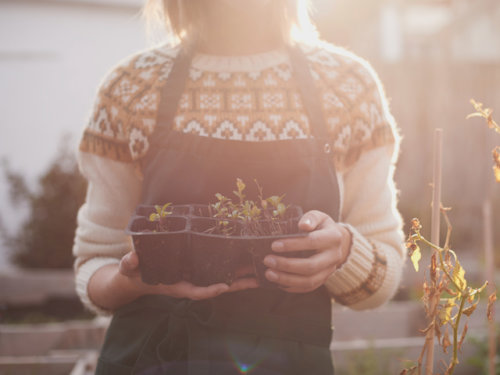How to Transfer a Potted Plant Into Your Garden
It seems obvious, right? Transferring a potted plant should be an easy and simple process– but most new gardeners frequently make the mistake of forgetting to loosen the soil around new transplants, which can make it harder for finicky plants to adapt to their new homes. We found this simple guide on The Knot‘s home décor page The Nest, and thought it was a very helpful guide for beginners. Check out how to transfer a potted plant below, courtesy of the Nest and Thomas McClain, a Minnesota landscape designer and owner of GrowWithDesign.com.
When a plant has outgrown its pot and is in need of some extra breathing room, removing it from the container and putting it in the ground can be a bit tricky. Before you even touch the plant, you need to dig the hole you’re going to put it in. The depth in the ground should be equal to that of the pot (use the side of your shovel to measure), and the diameter of the hole should be wider than that of the container. The bigger your hole is width-wise, the better — the plant will have an easier time rooting into the loosened soil.
Now, back to the plant. Tap on the side of the pot with your trowel to loosen the soil around the roots — you might actually deform the pot, but that’s ok.
New gardeners often forget to loosen the soil around new transplants, which can make it harder for finicky plants to adapt to their new homes.
Once it’s pretty loose, slide your hand onto the base of the plant, where the roots and soil start on one side and the plant starts on the other (imagine teasing your hand through your hair so it cups your scalp). Then, tip the pot upside down and gently slide the plant out. Since you have a hold on it, none of the leaves should get injured.
Time to put the plant in the soil! Place smaller plants directly into the hole. Then, replace the soil around it and soak the plant and soil as soon as you can. With bigger plants like shrubs or trees, fill up the hole with water before you put the plant in so that the root matter and surrounding soil gets thoroughly soaked. No more initial watering is necessary for larger plants.
Via The Nest

































